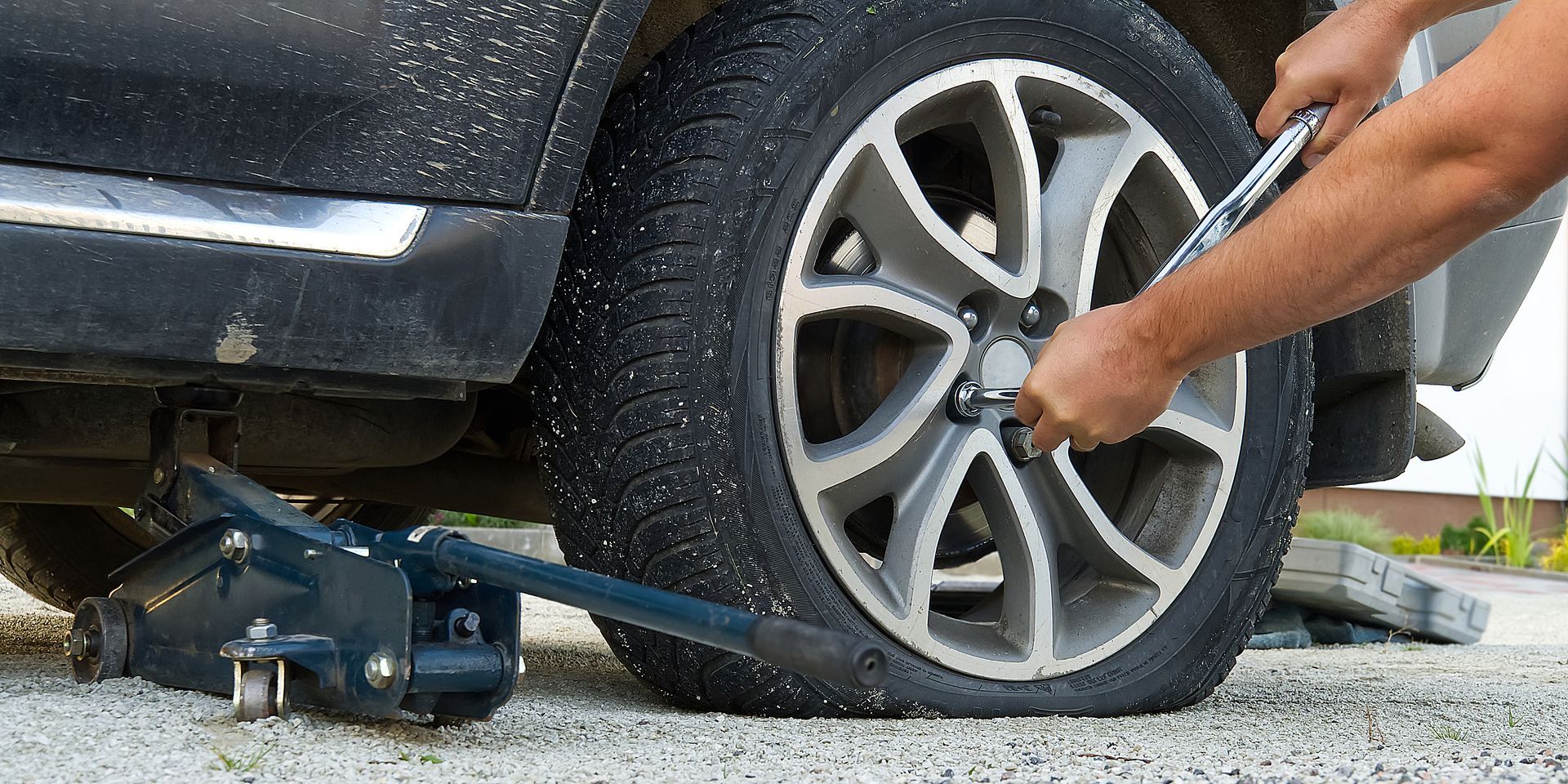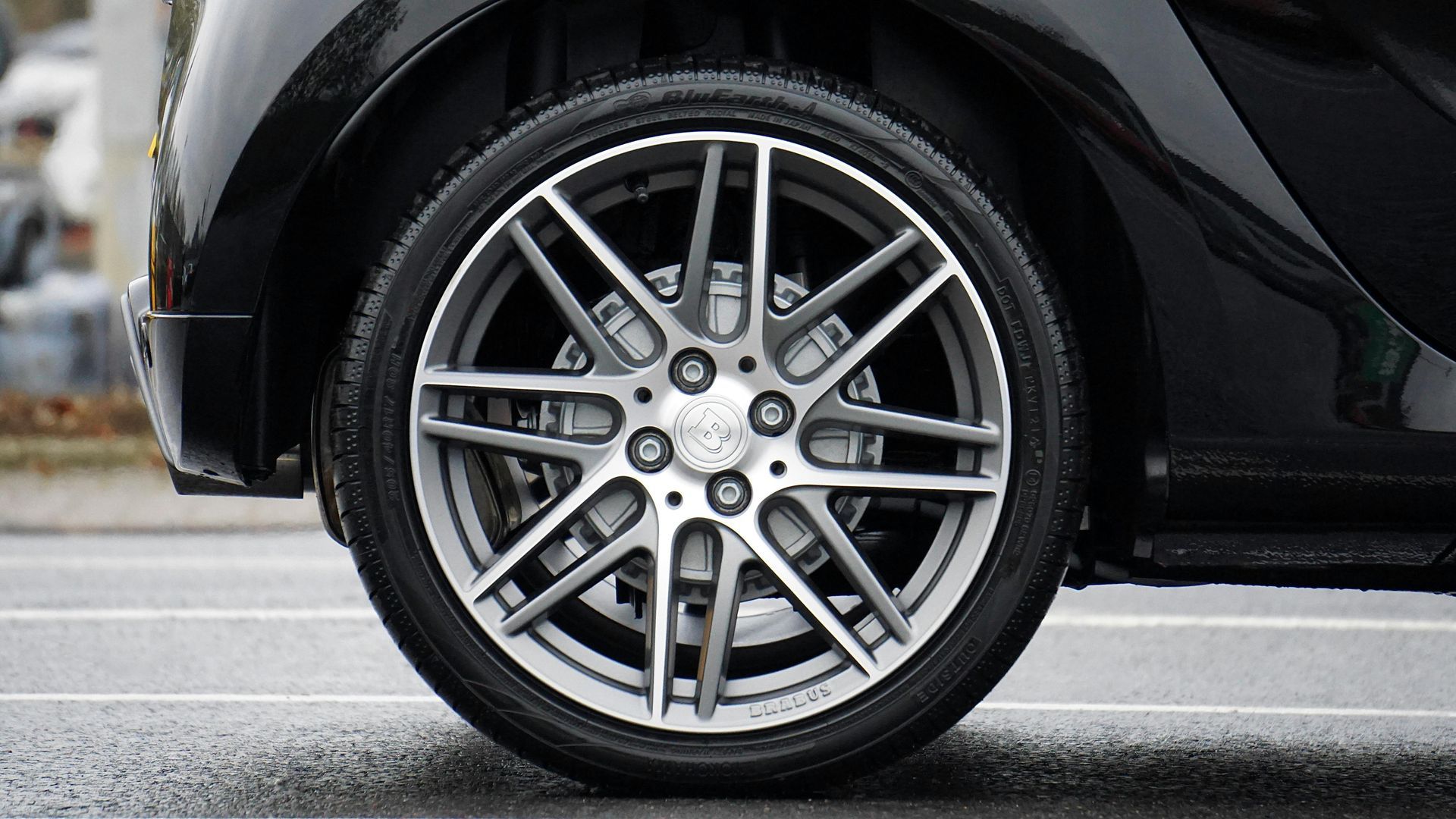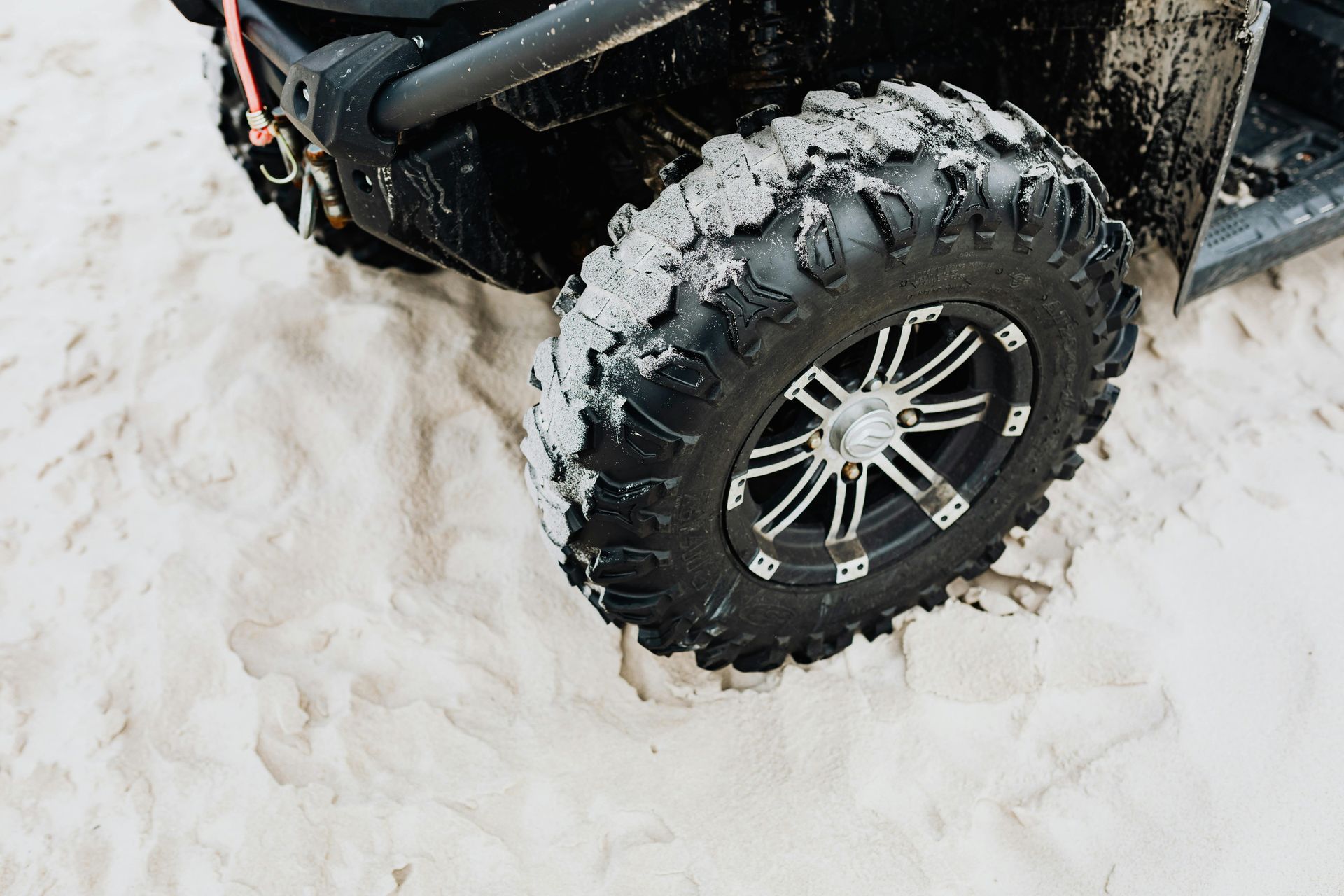For those traversing the packed highways or navigating the sprawling neighborhoods, the dreaded 'thump-thump' of a tire compromised by a nail can set hearts racing and plans unraveling. Questions surge about the viability of a repair, especially when the tire in question is designed to outlast typical punctures. Facing this scenario, a discerning vehicle owner wonders if they can indeed fix a flat tire with a nail embedded deep within a run flat's robust carcass. Industry wisdom clashes with real-world stories of run flat tire puncture repair , hinting at a divide between what is often recommended and what is actually possible.
Amid these common conundrums, owners are led to inquire: Is repairing a run flat tire more myth than reality? One case takes us through the well-trodden path of a luxury car owner who, after finding a nail precisely one inch away from the sidewall, grappled with the decision between trusty specialized tire shops and the articulate advice from prestigious dealers. With various voices from the automotive forums chiming in, the gray areas of patching versus plugging run flats lay bare the layers of uncertainty that accompany each puncture's fate.
Key Takeaways
- The decision to fix a flat tire with a nail depends on puncture location and tire structure.
- Run flat tire puncture repair options vary between plugging and patching, with both having their own merits and limitations.
- While manufacturers often discourage repairing run flats, practical experience shows that it can sometimes be successfully performed.
- Choosing the right tire shop can greatly affect the outcome of a repairing a run flat tire attempt.
- The importance of adhering to safety and manufacturer guidelines cannot be understated when considering tire repairs.
Evaluating the Damage: Can Run Flat Tires Be Repaired?
When faced with a run flat tire that's been compromised, motorists are thrust into the daunting task of discerning whether to repair or replace. The crux lies in understanding the unique attributes of run flat tires and how they influence repair possibilities. Traditionally, these tires are designed for resilience in the face of deflation, yet when punctured, they present a complex challenge to car owners and repair services alike.
Understanding Run Flat Tire Composition
Run flat tires are a marvel of modern automotive engineering, constructed to maintain vehicle mobility even after experiencing significant loss of air pressure. Their robust sidewalls and heat-resistant materials afford drivers the convenience of reaching a safe location or tire repair shop without immediate deflation. However, their distinct composition raises questions about the efficacy of using a run flat tire repair kit when confronted with punctures.
Assessing Puncture Location and Size
The potential to repair run flat tire damage hinges on the puncture's characteristics. A prime consideration is the puncture's position relative to the tire structure—repairs are generally more favorable when the damage is confined to the center of the tread area and away from the critical sidewall regions. Furthermore, the size of the puncture plays a pivotal role; smaller perforations are naturally more amenable to conventional emergency repair techniques.
Manufacturer's Guidelines vs. Practical Experience
Despite the stringent caveats issued by manufacturers, cautioning against repairs to run flat tires, numerous drivers have shared success stories of restoring tire integrity. In real-world scenarios, where a swift emergency tire repair is desired, the use of a specialized tire plug can offer a temporary yet rapid solution for motorists. Nonetheless, it is imperative to note that such interventions, particularly after the tire's pressure sensor has been activated, may impair the tire's original run-flat capabilities.
This examination of the factors involving run flat tire damage and repair uncovers a landscape where technical guidelines intersect with empirical findings, placing vehicle owners at a crossroads of decision-making that weighs manufacturer's advice against the practicalities of tire repair.
Can You Fix a Run Flat Tire With a Nail in It?
For those who find themselves with the classic dilemma of fixing a flat tire with a nail, when it comes to run flat tires, the conversation becomes more nuanced. Amidst the sea of cautionary tales and advisories against repairs, there emerge stories of successful revival of punctured run flat tires. It is not a clear-cut loss for those tires; it's rather a challenging terrain navigated by seasoned tire professionals.
While manufacturers often discourage tampering with the specialized construction of run flat tires, many drivers have experienced successful patching, especially when handled by experts free from restrictive corporate policies. Patching a run flat tire might require a more meticulous approach due to its unique design, which allows it to sustain a vehicle's weight even with a significant loss of air pressure.
Solutions range from plugging to patching, with reports of certain tire specialists considering both internal and external methods. These success stories support the notion that while official guidelines may favor replacement over repair, the real-world application of tire repair techniques can indeed extend the life of a run flat tire tasked with carrying drivers to their destinations safely.
- Evaluation of puncture severity and location is imperative, as sidewall damage remains a non-negotiable replacement scenario.
- Reliable tire specialists who understand the complexities of run flat tires can sometimes override a one-size-fits-all replacement directive.
- Given the appropriate conditions, fixing a flat tire with a nail need not always lead to tire disposal, but the repair should never undercut safety.
The consensus among pragmatic drivers and willing specialists is that while not every nail-inflicted injury to a run flat tire can be mended, there exists a subset of damages that can be reliably and safely resolved. This reinstates mobility without necessarily incurring the cost and resources associated with a full tire replacement.
Repair Techniques: Plugging vs. Patching a Run Flat Tire
When confronted with a punctured run flat tire, drivers seek the most effective repair methods to ensure their journey continues safely. Two common approaches surface: plugging and patching, yet choosing the appropriate technique demands an understanding of their differing procedures and outcomes.
The Procedure for Plugging Run Flat Tires
For a quick run flat tire puncture repair, plugging can often serve as a convenient solution. The plug, made of an adhesive material, is inserted into the puncture from the outside and acts as a barrier to air loss. Drivers are sometimes inclined to consider a run flat tire repair kit for at-home plugging, but for the untrained, this could pose risks to the tire's reliability.
- Remove the object causing the puncture and ream the hole.
- Insert the plug with the use of an insertion tool.
- Trim the plug flush with the tire surface and apply vulcanizing cement if necessary.
Despite the simplicity, plugging should only be seen as a temporary fix, especially for run flat tires designed to withstand a deflated state.
The Patching Process: An Internal Solution
Patching is a more involved run flat tire puncture repair method that requires dismounting the tire and applying a patch from the inside. It's generally considered a sturdier and safer long-term solution compared to plugging. Drivers may find patch kits while searching for a run flat tire repair kit but applying a patch effectively often involves professional help.
- Dismount the tire and inspect for internal damage.
- Clean and buff the area around the puncture.
- Apply the patch and use a roller to secure adhesion.
- Remount and balance the tire for even wear.
Risks and Benefits: Weighing Repair Options
The greater predicament lies in determining whether to plug or patch, bearing in mind that the structural integrity of run flat tires is paramount. With both techniques, there are inherent risks like reduced tire performance or failure, especially if the tire has been driven while deflated. Conversely, the benefits of restoring mobility and extending tire life cannot be overlooked. It is advisable for drivers to seek professional opinion before proceeding with self-repairs using a run flat tire repair kit.
- Plugging can be a quick fix but may not be as durable.
- Patching provides a more lasting repair but requires specialized equipment.
- Professional assessment is key to ensuring the safety and functionality of the tire post-repair.
Awareness of the distinctions between plugging and patching, as well as their respective implications, help drivers make informed decisions about run flat tire puncture repairs—a matter not just of convenience but of road safety.
Sourcing Professional Help: Choosing the Right Tire Shop
When the need for emergency tire repair arises, particularly if you're dealing with a run flat tire, the expertise of your chosen tire shop could make all the difference. Independent tire shops may offer a personalized approach to run flat tire repair kit solutions, whereas national chains may adhere strictly to manufacturer guidelines, often opting to replace rather than repair.
Before selecting a tire shop, consider the following factors:
- Research the policies of local tire shops regarding run flat tires to ensure they have the willingness and capability to manage your emergency tire repair needs effectively.
- Verify the shop's credentials and ensure their technicians have experience specifically with run flat tires to guarantee a quality fix.
- Examine past customer experiences and reviews to inform your decision, looking for positive feedback on run flat repair services.
Acquiring road hazard insurance as a precautionary measure can also alleviate the stress and expense of future run flat tire repairs. Being equipped with both knowledge and the right run flat tire repair kit can ease the process significantly.
Ultimately, seeking a specialized shop that values safety and customer satisfaction will provide peace of mind that emergency tire repair, when performed, is done with care and precision.
Conclusion
The debate surrounding whether you can fix a run flat tire with a nail in it reveals a spectrum of opinions, pointing to a complex interplay between manufacturers' cautions and the real-world experiences of drivers and tire technicians. The heart of the decision often rests on the specifics of the puncture—its size, location, and the extent of internal damage. Industry experts may diverge in their recommendations, but repair success stories have been noted when the damage is limited to the tread and away from the tire's critical sidewall structure.
Repairing a run flat tire is not a one-size-fits-all proposition. It involves assessing risk factors, such as the potential compromise to the tire's structural integrity and the safety issues that may ensue. Tire shops have distinct policies; some may adhere strictly to the OEM guidelines, suggesting replacement over repair, while others may consider a repair run flat tire approach, especially if it seems viable and economical to the vehicle owner. As with most automotive repairs, the expertise of the mechanic plays a crucial role in determining the success of the repair.
Invariably, the principal aim is to ensure the safety of the driver and passengers. Vehicle owners must navigate through varying advice, balancing cost, convenience, and safety. When faced with the question—can you fix a run flat tire with a nail in it—the answer is conditional. It can potentially be fixed, but each situation warrants independent evaluation with professional guidance. Ultimately, while repairs may be technically possible and have been achieved, they must never be undertaken at the expense of safety, emphasizing the need for a thorough inspection and a cautious approach to tire maintenance.
If you are ever in need of tire repair in the Phoenix, Scottsdale, Tempe and East Valley areas contact us at LugWrench Heroes for Mobile Tire service.














